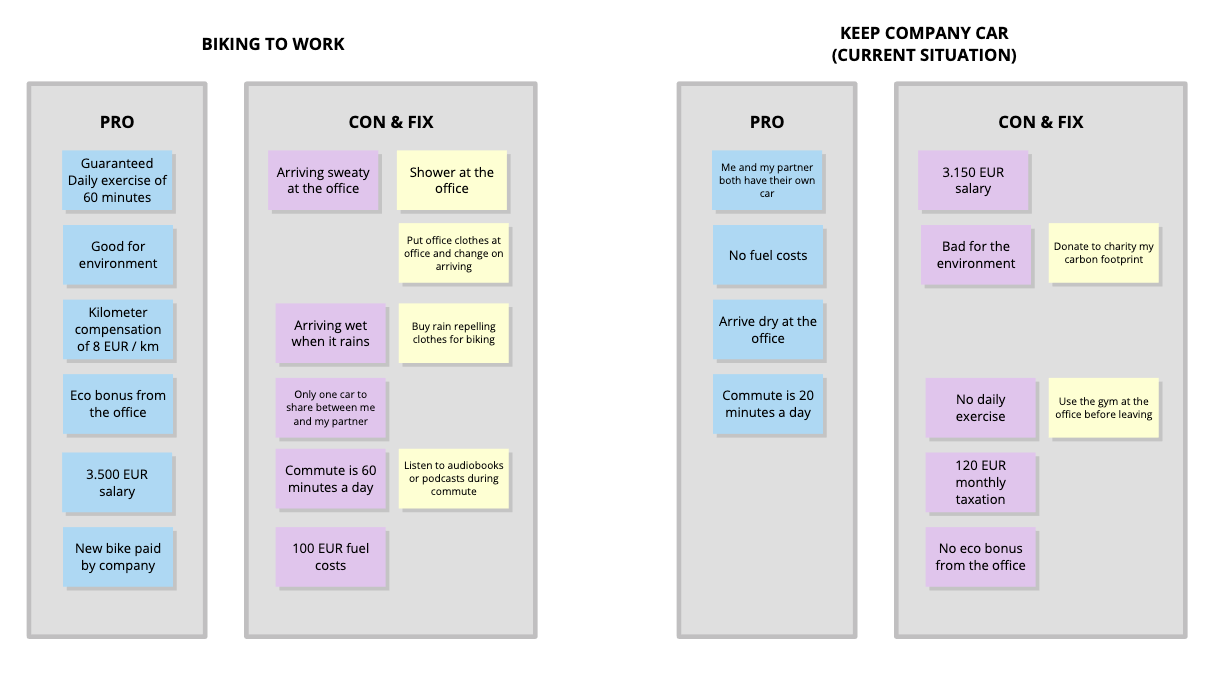There is no better feeling than an well planned meeting ending on a high note. It is true, I find that an amazing feeling. The problem is that it happens very rarely. Most of my meetings are utterly frustrating, turning into endless discussions instead of constructive conversations. More often than not I walk away without knowing what was decided (if anything was decided at all) or how to proceed moving forward with a clear overview of actionable steps. Often those discussions go hand in hand with focusing on one negative aspect that we would have to deal with in our code, without even talking about all the positive implications this would have on our system.
The idea of having to do that for the rest of my career was pretty depressing. I just couldn’t accept that this was the way I would feel about meetings for the rest of my career. It is not possible to avoid all meetings and I don’t want to be frustrated every time I come out of one. So I went looking for a better way. It has been a long and slow process, with many experiments that did not go well, but I am starting to get the hang of it.
One important thing I realised is that visualisation while having a discussion is super important. Information needs to be visualised in an easy format. I want to start sharing those visualisations with you, in case you are also looking for a better way to do meetings. One of those easy structures to visualize decisions or discussions during a meeting is the Pro-Con-Fix list. I found it to be very helpful when thinking about the benefits or drawbacks each option would have on the current situation.
What is a Pro-Con-Fix list?
The Pro-Con-Fix list1 is an extension of the Pro’s and Cons list, that will help you deal with the tendency to overfocus on the drawbacks of an option.
We start by writing down all the advantages of the option, all the things you will gain when you pick this option. I know it is tempting to start with summing up the Cons first, because it is a lot easier to come up with those, but remember we are starting with the Pro’s for a good reason. We don’t want to end up in a discussion where we only talk about the Cons.
Thinking about biking to work for a second. I am sure you can come up with a lot more downsides than benefits from biking to work. Oh, here we go: it takes longer, you arrive sweaty, you lose your company car, you get wet when it rains, etc… Please make it stop! Now think about the benefits. Euh… It is healthy to exercise? That is it, that is all I have, but back to those Cons…
So, write down the Pro’s first! After that, you write down all the disadvantages of the option. This is where it gets interesting. After you write down a disadvantage, you think about the way you could fix it. It sounds simple (because it is) and it is very powerful. For example: one of the drawbacks of biking to work is that you get wet when it rains. There are a lot of ways to deal with that: put your office clothes in your office (that also works for being sweaty), buy water repelling clothes. Biking to work in the rain didn’t become a joy all of the sudden, but it did neutralise one of the disadvantage.
When do you use it?
The best situation in which you can use a Pro-Con-Fix list, is a situation where you want to compare two options with each other. A binary decision is a very good fit for the Pro-Con-Fix list: yes or no on taking this specific job, yes or no on buying this specific car etc..
If you want to start comparing three or more options, there are other structures you could use. One of those, working with a comparison matrix, I demonstrate in my talk The Curious Case of Freya, Suave and Giraffe: reducing risks in picking a new tech
Example
In this example I own a company car. My company wants to participate in the eco-swap that the government is promoting. This means that employees can hand in their company car and replace it with a eco-friendly commute such as biking, public transport, etc…
For me this means I would bike to work instead of taking my company car, so the two options we want to compare are:
- Biking to work
- Keep company car

Tips and tricks for using it
Make the second list
I think the most important tip I can give anyone is to make the second list of a binary decision. When you have one option, it is very tempting to think that it suffices to create one list because you know and understand the current situation. Unfortunately it is very easy to have blind spots, so it is very benefitial to think about the current situation and what you would consider positive and negative about it and to think about neutralising certain negative aspects of it. Chances are you haven’t really done that before or the list is outdated.
Not every con has a fix
You cannot neutralise every Con, sometimes you have to learn to accept the negative side of an option.
You are comparing lists, not items on the list
Something I have noticed when working with a Pro-Con-Fix list, is that it is very tempting to fixate on a couple of items on a list, instead of talking about the lists as a whole. If you start doing that, you are just back to a pointless discussion that will not result in a decision with actionable steps to move forward. Draw the attention back to the list.
A fix has to be actionable
Actionable means that you have to be able to do something when you read a fix. Things like ‘find out if’ or ‘encourage people to’ are not actionable steps. Find out if it is possible and think about how you will encourage people. The list is the research moment, the research does not come after creating the list. You can’t make an informed decision if you are not sure a fix is possible.
Each item has to be able to stand on its own
Each item in the pro section of one option, more or less (not always) results in a Con-Fix item of the other option. So it is very tempting to write those items in comparison with each other.
If we take a look at the example from before, I could have written 40 minutes less free time instead of Commute is 60 minutes a day. For the pro in “Keeping company car”, I could have gone for 40 minutes more free time instead of Commute is 20 minutes a day. Although it captures the same information, if I write 40 minutes more/less free time, there is a lot of information lost. I don’t know how long the commute is right now, and I don’t know how long the commute will be on bike. Even if I write Commute is 20 minutes and 40 minutes less free time, I need to have both lists in order to have the full picture of those pro and con. It is better if you can focus on each list individually first, without having to show to other list. It keeps the discussion focused during meetings. Words such as “more”, “less”, “faster”, “extra”, etc… are good indications that you are not writing each item on a list to stand on its own.
Individual brainstorming before team collaboration
If you are creating the Pro-Con-Fix list in team, it is better to divide each step into two steps:
- write down all your pro’s individually
- group them together and merge the individual items into one pro column.
Same goes for summing up Cons and their Fixes.
Resources:
-
The Thinker’s Toolkit: 14 Powerful Techniques for Problem Solving, by Morgan D. Jones ↩

